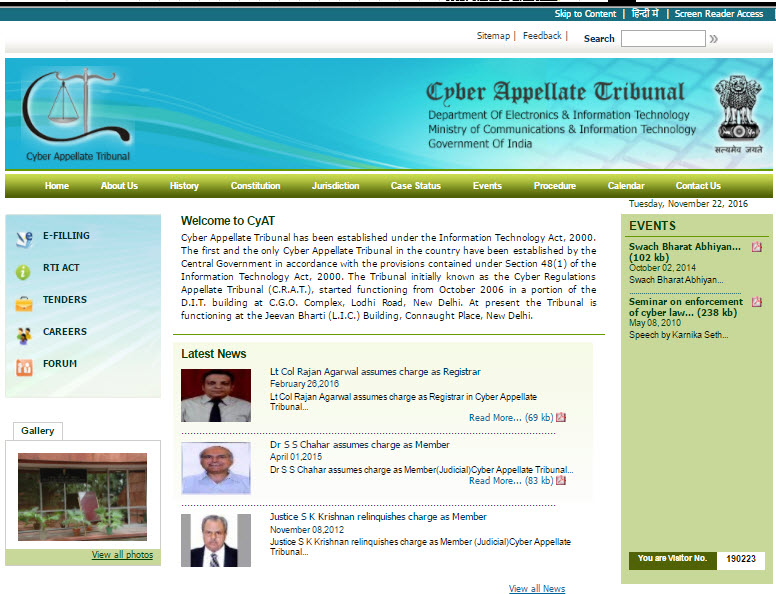It is good to note that the World view is slowly but surely tilting towards the adoption of Crypto Currencies which are managed by the regulators of the Fiat countries instead of the privately managed “Decentralized” and “Unregulated” Crypto Currencies like the Bitcoin or other Alt Coins which have been adopted by Criminals as the currency of the underworld.
First it was the Russia which announced that it would get its own National Currency. Close on its heels we now have an announcement that China will also adopt its own National Crypto Currency. At this point of time the full details of how these currencies are likely to operate is not clear. But the concept is similar to what we have been advocating for the last several years that we can use the Block Chain technology for creating a Crypto Currency which will be managed and controlled by the Central Bank of a country. We called it as a BitRupee in the Indian context.
The RBI is already aware that an Indian Non Resident has already proposed an algorithm for “GreenCoin” where a provision is built in for a de-anonymized version of the Crypto Currency which can be used by RBI to test run the feasibility of a “Regulated Crypto Currency” if it is open to the idea. So far RBI has remained silent on the proposal and the Finance Ministry’s sub committee on BitCoin regulation which has had multiple discussions with ZebPay does not seem to have had any discussion with the Green Coin creator nor with others who think Bitcoin has crossed the line of ever being accepted as a Currency of the civilized world. However, the inherent character of RBI to be cautions in such matters may ensure that the Committee or the Task force of the Committee would not take a decision to write a death note for the Regulated Currency system by adopting either the Bitcoin itself or any of its alternatives like the Ethereum etc.
The BitRupee which we are suggesting is a concept that may have the following charecteristics built into the algorithm.
- Every Newly mined unit of BitRupee will carry an identity tag like the printed serial number of the Currency. Whenever a Bit Rupee is sub divided, the identity will be carried through to every sub unit.
- The BitRupee identity would be generated during the mining process or its sub division process only with a key from the RBI so that every such creation and sub division will be with the approval of the RBI.
- The Control of the key that validates the mining of a new BitRupee or its sub division would be a separate matter of discussion. Suffice it to say that this will determine the security of the system and has to be on a “Distributed Control of several Persons” on the lines of how the domain name system is regulated through the root server management.(Refer here for more information on how the DNS system is controlled). It should not be under the control of a single person even if that single person is the “Governor of RBI”.
- Every subsequent sale or purchase of a BitRupee or its subdivided unit which we may call BitPaisa or by Bit Anna, Bit Kasu etc will be routed through accredited exchanges like the Authorized Dealers of today and a transaction code will be tagged with each transaction.
- The transaction code will track the origin and destination BitRupee wallets which will be maintained by accredited Wallet Service providers who are licensed under the Payment and Settlement Act (Being modified as suggested by the Watal Committee).
- The Exchanges may be monitored by a joint regulation of RBI and SEBI like the Foreign Exchange transactions now carried through in the MCX or by a separate Crypto Currency exchange to be created by statute. It may be called the Crypto Currency Regulatory Authority of India.
- In every successful mining transaction, a certain number of BitRupees would be generated and a portion of it will be credited to a fund of the Government as a “Reserve”. The exact percentage of how much should be credited to the fund may be regulated in the Crypto Currency monetary policy like we manage the SLR/CRR today. It could be as low as 30% or as high as 70%. It could start with some percentage and modified from time to time.
- An important aspect of the suggested regulation would be that this system would be insulated against the system of Private Crypto Currencies and no buying or selling against such currencies would be allowed by the accredited exchanges. The “National Currencies” of other countries as and when they emerge may be brought into a pool of “Permitted Exchangeable Crypto Currencies” and this system would be managed with a Crypto Currency Management Act or CCMA like the FEMA. It should therefore not be possible to convert any of the current holdings of Bitcoins or other AltCoins into BitRupee through these accredited exchanges. All other transactions of AltCoins would be specifically considered as “Unauthorized” and treated as a violation of the CCMA
The above system runs on the established Block Chain technology like the one used in Bitcoins but controlled by a special algorithm which manages the requirements mentioned above. We should be able to build in the limitation on the total currency, changing difficulty levels etc so that technology people can have an experience similar to what they now appreciate in Bitcoin and love it for. There will be scope for BitRupee exchanges and Wallet Services which the current day business entities like ZebPay would use to further their business. Hence there will be no obstruction to the business interests of the early innovators in the BitCoin eco system in India.
Licensing of Exchanges and Wallet Providers will be regulated under the common principle that “Financial Wealth of the Country cannot be exported out without the regulation and supervision of the Central bank” which means that business entities of foreign origin need to be regulated like the regulation of Foreign Banks.
It needs to be debated on how this type of “Indian National Crypto Currency” would be received in the market and what will be its impact on the economy. It will definitely add to the money circulation and hence RBI needs to monitor the total money circulation which includes the mined BitRupee stock with the floating currency. Gradually RBI may reduce its printing activity so that the floating stock of physical currency may keep shrinking as the BitRupee along with other forms of digital payment systems take root.
Over a period, all sovereign Governments working under the UN will float their own National Currencies and India should insist that only those currencies which donot provide a conversion of private Crypto Currencies to the National Crypto Currency of that country would be accepted for conversion and trading with the Indian BitRupee. Other Crypto currencies should be treated on par with AltCoins even if they are termed as “National Crypto Currency” by that particular country. This may require adoption of other country’s National Crypto Currency into our Crypto Currency Exchange mechanism through individual “Crypto Currency Treaties” to be negotiated and signed with each such country.
This would in due course develop a “Global Crypto Currency Monetary/Regulatory Authority” (Like the IMF) and India should take the lead in setting it up with headquarters in India… probably in the Silicon City of India.
The suggestion given above is for debate and we invite the members of the Task Force of the Bitcoin regulation committee consider this proposal. There could be improvements to the above suggestions and we need to find the technical solutions to structure the algorithm, test it for functional robustness and security before it becomes a reality. But we should start this exercise without further delay.
Naavi







